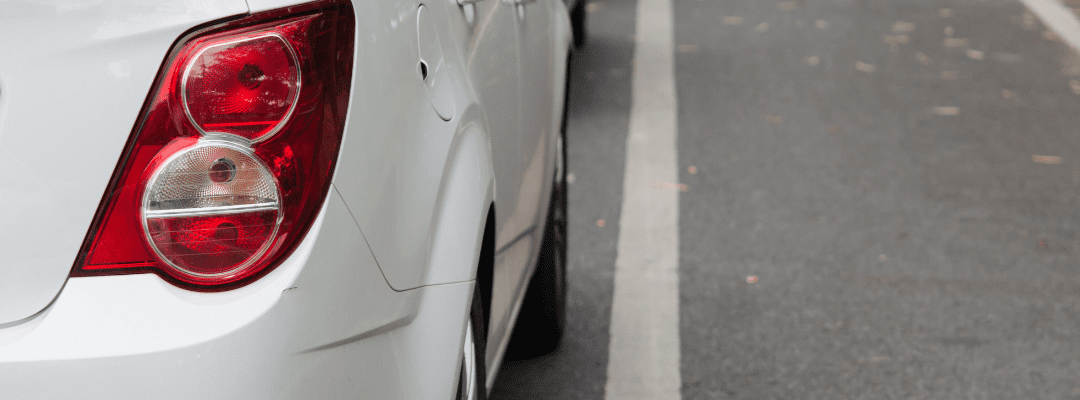In 2020, a total number of 2,428 rear-end collisions happened in the USA. Out of all types of accidents, these rear-end accidents were responsible for around 6.8% of total fatal crashes. These types of crashes are far more likely to occur when drivers are distracted or when they tailgate the vehicles in front of them. Distractions such as iPods, adjusting the radio, eating, children, pets, and cell phones also increase the likelihood of accidents. Drivers who use cell phones are four times more likely to be in a motor vehicle collision.
There can be many causes of rear-end collisions. Such as –
- Distracted Driving
- Drunk Driving or driving under the influence of drugs
- Unable to make an emergency stop
- Mechanical failures
- Following too close to the car infront
- Bad weather conditions that lead to slippery roads, decreased visibility
Mostly, a rear-end collision in PA occurs when a vehicle is stopped at a traffic light or stop sign and is struck from behind. In these situations, the at-fault driver is easy to identify. Just keep in mind that rear-end accidents are not always so cut-and-dry.
Who is at Fault in a Rear-End Collision?
In 2019, rear-end car accidents were the second most prevalent form of two-car collisions. All drivers must exercise caution behind the wheel. Causing a rear-end collision could mean trouble for you since, statistically, a driver who hits the car ahead of him is found to be the at-fault driver.
However, this is not always the case.
There are a few circumstances that can save a driver from automatic fault in a rear-end collision in PA.
- Multi-Collision – This kind of accident is a chain reaction among three or more vehicles. The first car rear-ends the second car, which then rear-ends the third car, and so on. In a case like this, the second car was simply caught in a sort of domino effect.

- Broken Brake Lights – Sometimes the car that was struck from behind did not have working brake lights or tail lights. In this case, it is harder to find the rear ender at fault.

- The Incautious Pull-out – If a driver is particularly reckless in how he or she backs out of a parking spot or driveway, this driver could cause a vehicle on the roadway to crash into the rear of the car.

- Sudden And Unexpected Stop – If a car in front of you suddenly hits its brakes due to a stop, unannounced circumstances or unexpected mechanical failure, then they may be found at fault for the accident.

- Unnecessary Lane Changes Without Signaling – If the driver in front is exhibiting reckless driving behavior and making sudden and unnecessary lane changes without proper signaling, these actions can contribute to a collision.

How Can You Be Found At Fault In A Rear End Collision?
Often times, people assume that the driver that hits the car in front of them is automatically at fault for the accident. However, not every rear-ends collision is that straightforward. Insurance companies will often try to shift the blame to the front car, claiming that the driver stopped short or slammed on the breaks, which was the cause of the accident. Other factors can complicate a rear-end collision, including the number of cars involved in the accident, road conditions, and the driving patterns of the drivers involved.
What is important to remember is that under Pennsylvania law, the driver who causes the rear-end collision from behind is typically at fault. The rational is that the individual should have been driving at a distance behind other vehicles that is far enough to allow a sufficient amount of time to react and stop before a collision occurs. Unfortunately, many insurance companies attempt to bully statements out of drivers that make the hit car appear more at fault and protect their own interests. For this reason, never make a statement to another insurance company after you have been in an accident because these statements could be used against you at another time. Instead, politely decline to make a statement, and contact your own insurance company or your accident lawyer.
Why Do You Need A Car Accident Lawyer In Determining Rear-End Collision Fault?
If the insurance company attempts to defend their at-fault insured driver by arguing the injured party in the car in front “stopped short”, a car accident lawyer can help. This is a defense we at Carpey Law often see employed by insurance companies. Insurance representatives are trained to protect their insured, and even what may seem like the most innocuous comments can be used to your disadvantage later in your personal injury case.
This is also the case in multi-vehicle collisions, or, chain-reaction collisions. We often see insurance companies trying to lay blame on other drivers. So, don’t help the insurance company by giving them information that will help them defend their insured to your disadvantage.
Under Pennsylvania law, the driver who causes the rear-end collision from behind should have been driving a safe enough distance behind any other vehicles such that they have enough time to react and stop, and ultimately avoid a collision.
Get Help From A Skilled Lawyer For Your Rear-End Collision
Every rear-end accident is different. The facts of each accident dictate whether or not you have a viable lawsuit. This can be a murky subject to navigate, but a skilled lawyer can help guide you on how to proceed. If you have experienced injuries from a rear-end accident, you should consult a lawyer to see if a lawsuit is a good option for you.

Stuart A. Carpey, who has been practicing as an attorney since 1987, focuses his practice on complex civil litigation which includes representing injured individuals in a vast array of personal injury cases.
